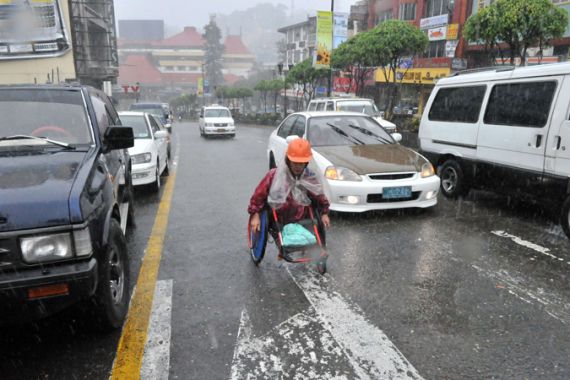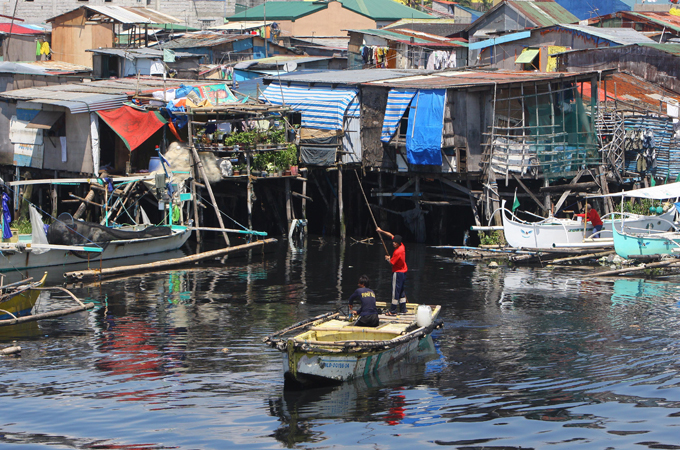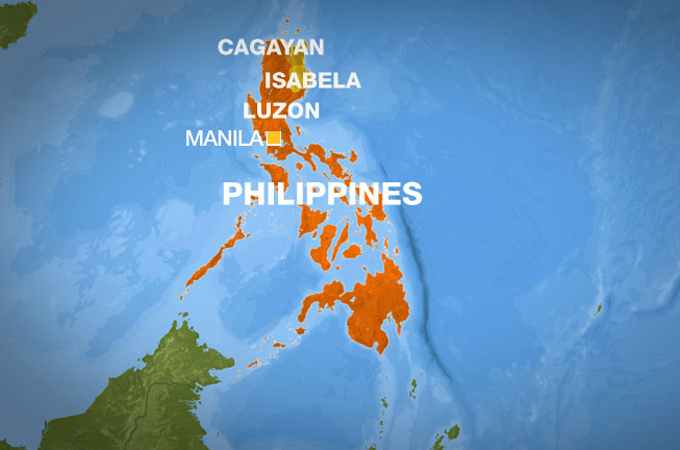Typhoon Megi hits Philippines
Storm makes landfall and claims first life after prompting evacuation of thousands of people in country’s north.

Super Typhoon Megi has claimed its first victim in the northern Philippines, according to authorities, who said that a fisherman drowned as the storm brought heavy rain and strong winds at landfall.
The man drowned in a river in the city of Tuguegarao on Monday morning as Megi approached the area, Benito Ramos, the nation’s civil-defence chief, said.
Keep reading
list of 4 itemsAfter the Hurricane
World’s coral reefs face global bleaching crisis
Why is Germany maintaining economic ties with China?
The northeastern provinces of Isabela and Cagayan, where Tuguegarao is located, were the first to feel the impact of the typhoon.
Megi, dubbed a “super-typhoon” by government relief agencies, has brought winds with speeds of up to 269kph, with gusts up to 324kph, the government weather station said.
Those wind speeds make Megi the most powerful storm to appear worldwide since 2005, when hurricane Wilma hit the Caribbean and hurricane Katrina devastated New Orleans. Megi is the strongest storm to hit the northwest Pacific region in the past 20 years, Everton Fox, Al Jazeera’s chief meteorologist, said.
The storm was not expected to hit Manila, the capital, but authorities have warned the city’s 12 million residents to remain on alert. Manila normally receives around 200 millimeters of rainfall in October, but the area in the vicinity of the capital will likely see somewhere between 300 to 500 mm of precipitation over the next 24 hours, making flash floods inevitable, Fox said.
Schools were closed and thousands of people were evacuated across the north of the Philippines’ main island of Luzon in advance of the storm, rescue and relief officials said.
 |
| Authorities have asked residents in seaside towns of northern Philippines to leave in the wake of Megi [EPA] |
Al Jazeera’s Jamela Alindogan, reporting from Manila on Monday, said that the number of evacuees in the northern areas had reached over 4,000.
“Local officials there have said that preparing for Typhoon Megi is like preparing for war, and that the rush to ensure the safety of local residents is proving extremely complicated,” she said.
Megi is expected to head out of Luzon towards the South China Sea on Tuesday. It will grow stronger over the warm waters and could reach wind speeds of 210kph by Sunday, when it is expected to hit southern China, a region already plagued by floods, Fox said.
Rain has also caused heavy flooding in Vietnam, where authorities believe 30 people have died and another 20 are presumed missing after water submerged and swept away a bus on the country’s main north-south highway early Monday morning.
Eighteen passengers managed to free themselves, some through a broken window. They clung to power poles and trees until being saved, but the rest disappeared in the current. Hundreds of soldiers, police and fisherman searched for the missing people, but they are presumed dead, a local official told the Associated Press.
Vietnam has accumulated more than two feet of rainfall over the past several days, and around 126,000 are estimated to have fled their homes.
Complacency warning
Earlier, Benigno Aquino, the Philippines’ president, ordered all government agencies to be on high alert to prevent casualties, while the coast guard was instructed to ban all fishing vessels from setting off to sea in the north.
“The president is reiterating that all agencies concerned should be ready for the approaching super typhoon Juan [Megi],” Abigail Valte, a deputy spokeswoman for Aquino, said.
She cautioned the public against complacency, amid reports that the weather in some northern provinces remained clear as of early Sunday.
Norma Talosig, the regional chief of the civil defence office, said the government was not ruling out forced evacuation for those who refused to leave their homes despite being told to do so.
 |
“If we have to conduct forced evacuations, we’ll do it for their safety,” Talosig said on national radio.
“Our main objective is the safety of the community, the safety of the responders.”
In Manila, disaster officials said food packs, medicine and rescue equipment, including rubber boats, were ready in areas expected to be lashed by the typhoon.
The Philippines is battered by an average of 20 typhoons a year, some of them deadly.
Tropical Storm Ketsana and Typhoon Parma struck the northern Philippine island of Luzon within a week of each other in September and October last year, triggering the worst flooding in recent history.
The twin storms killed more than 1,000 people, affected nearly 10 million and caused damage to $4.3bn of infrastructure and property, according to the World Bank and international humanitarian agencies.
The US navy’s Joint Typhoon Warning Centre in its latest advisory on Sunday said Megi had undergone “rapid intensification”, but could weaken as it moves across mountainous terrain after hitting Luzon.
Megi would then begin to steadily reintensify as it leaves the country heading for the South China Sea, it said.
China has urged its vessels to take shelter in ports and urged local authorities to prepare for emergencies caused by wind and rain, Xinhua said.